Would you believe that nearly 4.5 million people in the U.S. are bitten by dogs each year, with over 800,000 requiring medical attention?
While most dogs are loving companions, some breeds have a reputation for being unpredictable, aggressive, or even lethal. But is it their genetics, training, or environment that makes them dangerous?
From the powerful American Pit Bull Terrier to the mighty Presa Canario, certain breeds have been involved in tragic incidents, leading to bans in multiple countries. But before we label them as “dangerous,” it’s important to understand the factors that shape their behavior.
In this article, we’ll explore the seven most dangerous dog breeds, their history, temperament, and the risks associated with owning them. Are these dogs truly a threat, or is there more to the story? Let’s find out.
Most Dangerous Dog Breeds
1. American Pit Bull Terrier
The American Pit Bull Terrier has a history of being bred for bull-baiting and farm work. Over time, they became loyal companions, though their strong jaws and tenacity led to dog attacks. Despite their bad reputation, their behavior largely depends on their upbringing and environment.
Pit Bulls are often associated with aggression, but their risk depends on socialization and training. They have been involved in numerous dog attacks, leading some to label them a high-risk dog breed. Proper handling can make all the difference in preventing aggressive behavior.
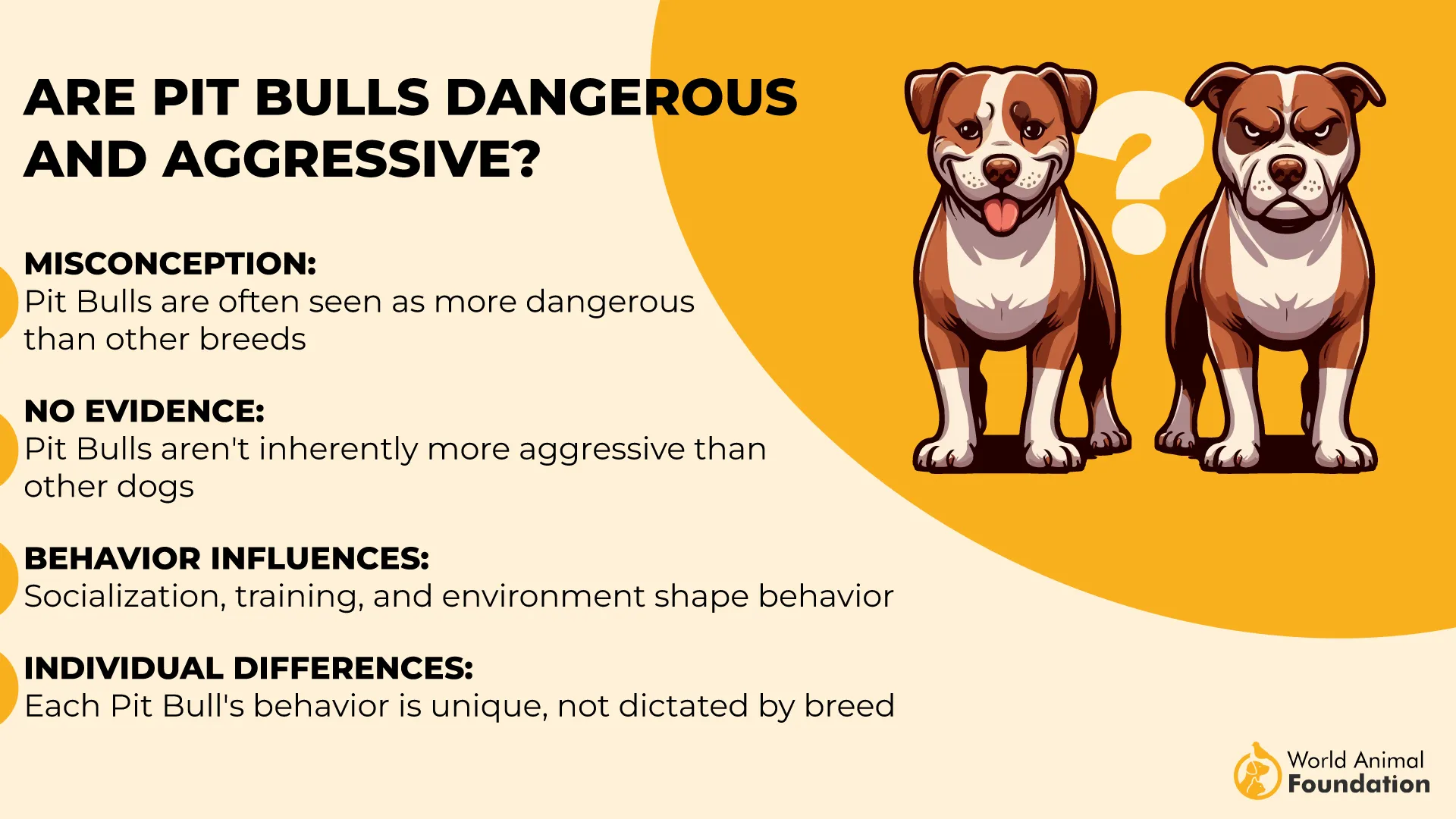
With a bite force of 235 PSI, the American Pit Bull Terrier is strong and capable of causing serious injury. Though not the highest among high-risk dog breeds, their tenacity makes them potentially dangerous in confrontations. Their physical strength is part of what makes them a controversial breed.
Due to their history of involvement in dog attacks, many regions impose strict regulations or bans on Pit Bulls. These laws often spark debate, as some believe other dangerous dog breeds should be equally regulated. Nonetheless, Pit Bulls remain one of the most restricted breeds globally.
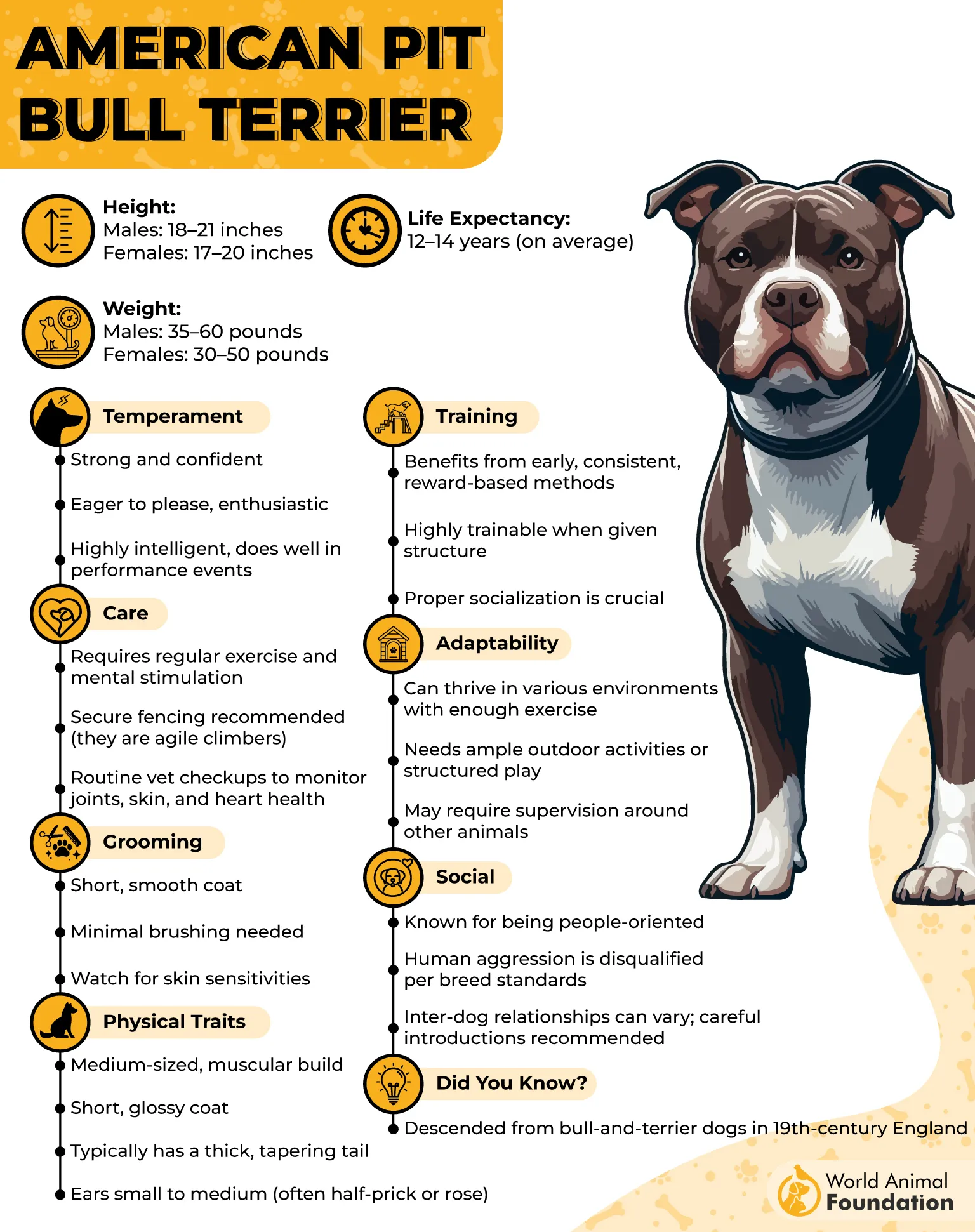
Despite their reputation, Pit Bulls can be affectionate family pets when trained and socialized properly as mentioned in PetMD. Early exposure to people, places, and other dogs can reduce aggression risks. A well-trained Pit Bull can be loyal, loving, and playful, defying the stereotype often associated with the breed.
2. American Bulldog
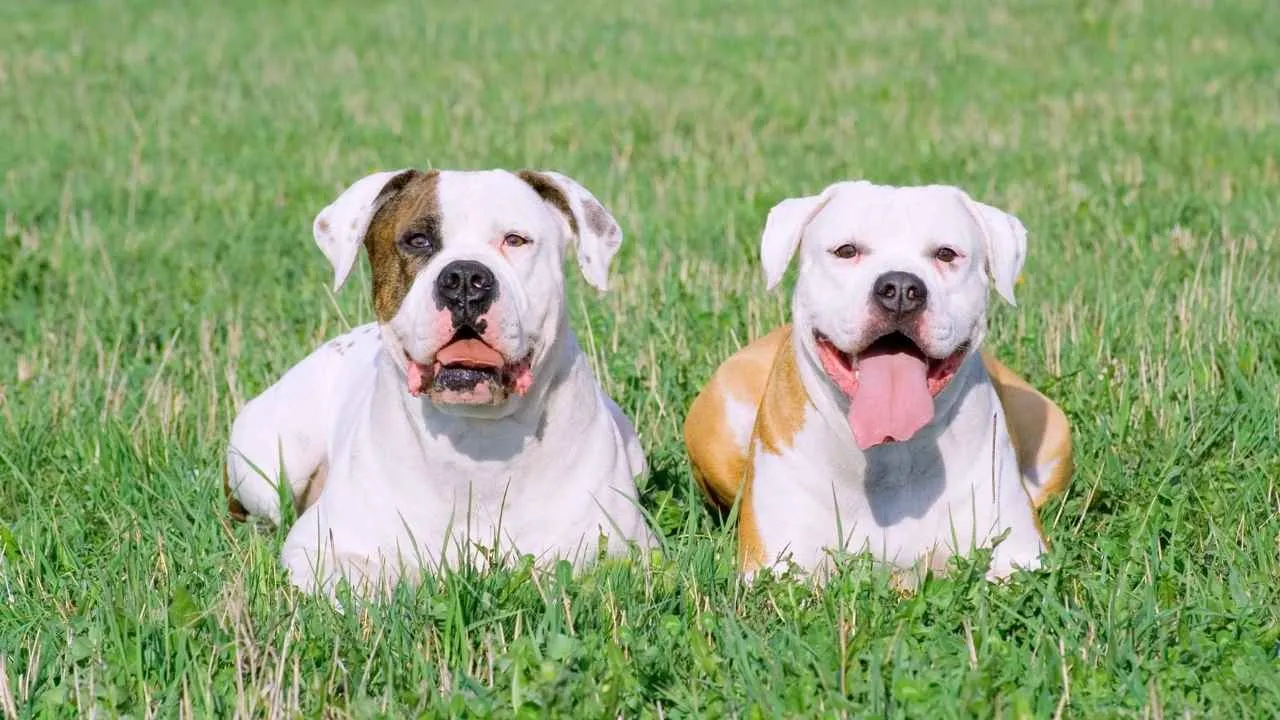
The American Bulldog has a rich history that traces back to working on farms and in the wild. Originally bred for catching livestock, these dogs were known for their strength and determination. Over time, they’ve become popular as guard dogs due to their protective instincts. They’re not just tough; they’re loyal to their families and fiercely protective.
Despite their lovable nature, these dogs can display aggressive behavior if not properly socialized. They’ve been known to cause a dog bite in tense situations, especially if they feel threatened. However, many owners report that their aggressive breed tendencies can be easily managed with the right training. The key is knowing how to handle them from a young age.

With their muscular build and bite force that can rival some of the most dangerous breeds, the American Bulldog is physically impressive. While not typically known for causing fatal dog attacks, their strength and determination make them a breed to approach with caution. It’s their size and power that make them stand out.
Unfortunately, their reputation as a dangerous breed has led to restrictions in some areas. Certain cities impose bans or require special permits for ownership due to the potential risk they present. While this can be frustrating for dog owners, it’s a reflection of the breed’s power and the responsibility it takes to keep them in check.
With the right training and socialization, the American Bulldog can be a delightful companion. Early training is essential to avoid unwanted dog bite incidents. A well-socialized Bulldog is often gentle, loving, and loyal to their dog owners. When treated right, they can be one of the most affectionate and protective pets you can have.
3. Bullmastiff
The Bullmastiff is a massive dog, bred to guard estates and protect families from intruders. Known for their strength and calm demeanor, they were originally trained to fend off poachers in the English countryside. These gentle giants quickly became a favorite among those looking for a loyal protector.
Despite their gentle nature, Bullmastiffs can be a bit intimidating if they’re not trained well. When faced with threats, they’ll act decisively, and without proper training, a dog bite might happen. However, with the right guidance, these dogs’ dangerous tendencies can be controlled, and they’ll show their affectionate side instead.

Their impressive size and powerful jaws give them a formidable bite force, capable of causing injury if necessary. Though they aren’t often linked to fatal attacks, they can still cause harm, especially when interacting with other dogs if not well-socialized. Their sheer strength demands respect and awareness.
While the Bullmastiff isn’t the first breed that comes to mind when you think of other dangerous dog breeds, their size and guarding instincts place them on the radar for certain restrictions. Some regions may impose laws due to their potential for serious dog attacks, especially if they feel their territory is being threatened.
Training is everything with a Bullmastiff. Without proper training, these dogs can display unpredictable behavior, particularly when interacting with other dogs. However, with the right approach, they can be affectionate and obedient. Socializing them early is key to keeping them calm, well-adjusted, and a true member of the family.
4. Chow Chow
The Chow Chow is one of the most unique breeds around, with its lion-like mane and reserved personality. Originally from China, these dogs were once prized for guarding temples and royal palaces. While their appearance might make them seem like soft fluffballs, don’t be fooled – they’ve got a strong, independent streak that makes them stand out from other breeds.
Despite their regal appearance, Chow Chows can sometimes show signs of aggressive dog behavior, especially when they’re not properly socialized as per WebMD. They’re known to be a bit standoffish, particularly around strangers. Without early training, they may act defensively, leading to dog fighting or aggressive interactions with other pets.
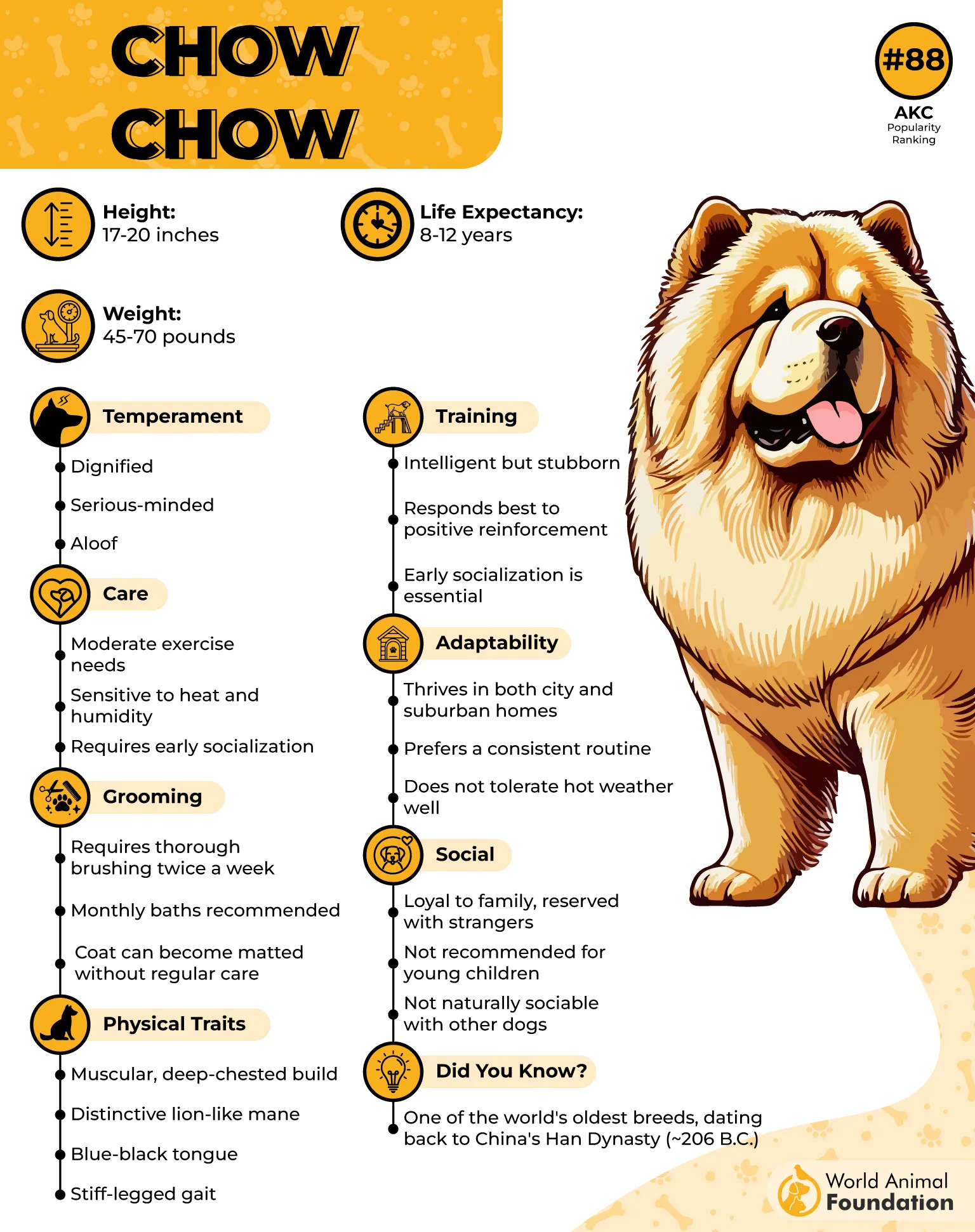
Their loyalty to their pet owners is unmatched, but when it comes to new people or unfamiliar dogs, they can become protective and territorial. Chow Chows have a tendency to be a little aloof, and their interactions with fighting dog breeds can be tense if they’re not carefully managed. With the right training, however, they can be loving companions.
Chow Chows are known for their strong-willed nature, which makes training a must. Without it, they could become more reactive, and potential dog-fighting situations could arise. While they might not be the easiest to train, patience and consistency go a long way with this breed. They’re not the friendliest with other dogs unless they’ve been taught to socialize properly.
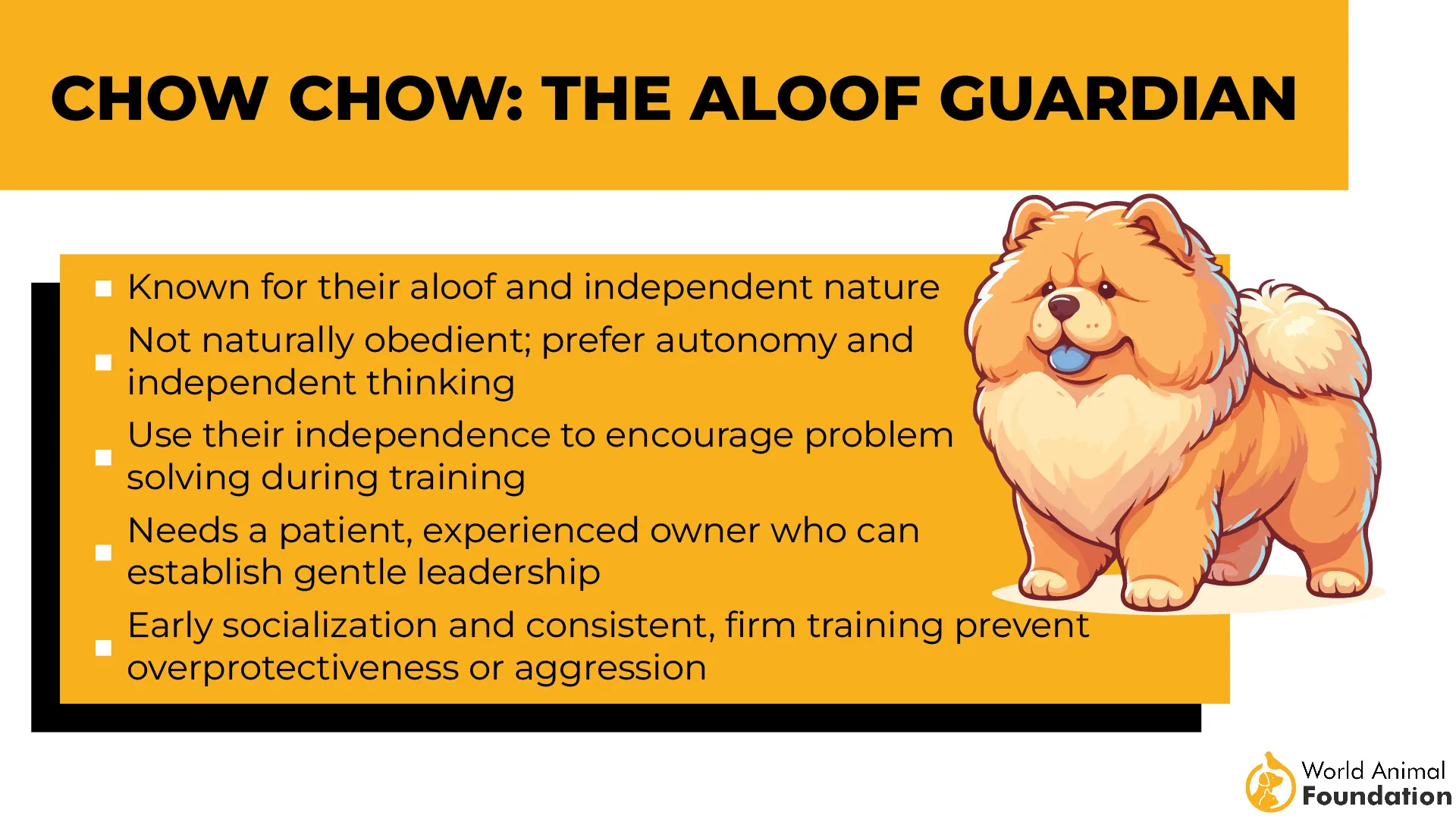
When it comes to pet owners, patience is key. Chow Chows might not warm up to new faces immediately, but with time, they can become extremely loyal. Their aloofness can sometimes be mistaken for hostility, but it’s more about their independent nature. A well-socialized Chow Chow is a devoted and calm companion.
5. Doberman Pinscher
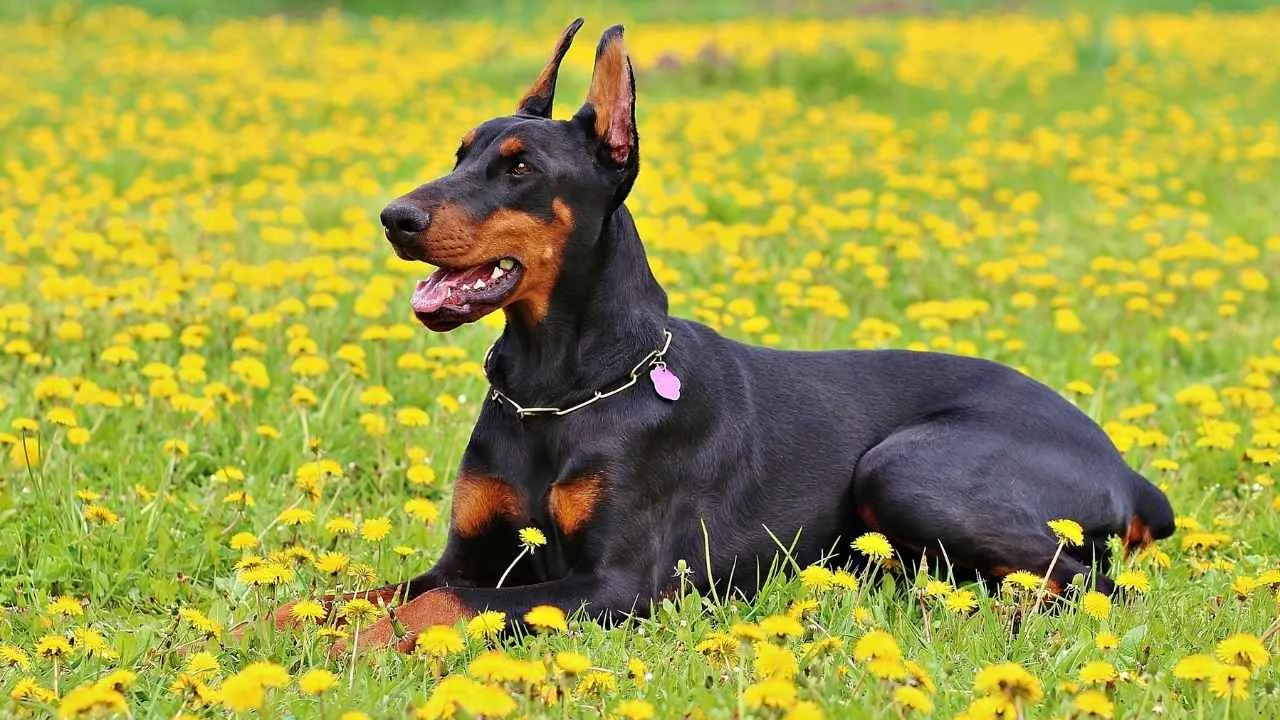
The Doberman Pinscher is a sleek and powerful dog, often seen as the quintessential guard dog. Originally bred in Germany by a man named Louis Dobermann, this breed was designed to be a protector, and it certainly lives up to that reputation. Though not the largest of dogs, they are built like athletes, and their alertness is unmatched.
While Dobermans are famous for their protective nature, it’s important to remember that these dogs need to be properly trained from an early age. Without the right guidance, they can develop undesirable traits, including over-protectiveness and aggression. Training them to recognize when to protect and when to relax is essential to avoid dangerous behaviors.

Despite their fierce reputation, Dobermans are deeply loyal to their families, as stated in Britannica. Their intelligence makes them highly trainable, but they also require mental stimulation to avoid boredom. A bored Doberman can become mischievous, and without proper training, that mischief can escalate into something more troublesome.
Dobermans are often associated with dangerous behaviors, but it’s not the breed itself – it’s how they’re raised. With the right environment, they’re loving, energetic companions who thrive on human interaction. Without it, however, they might become overly protective or territorial, so it’s crucial to nurture them carefully.
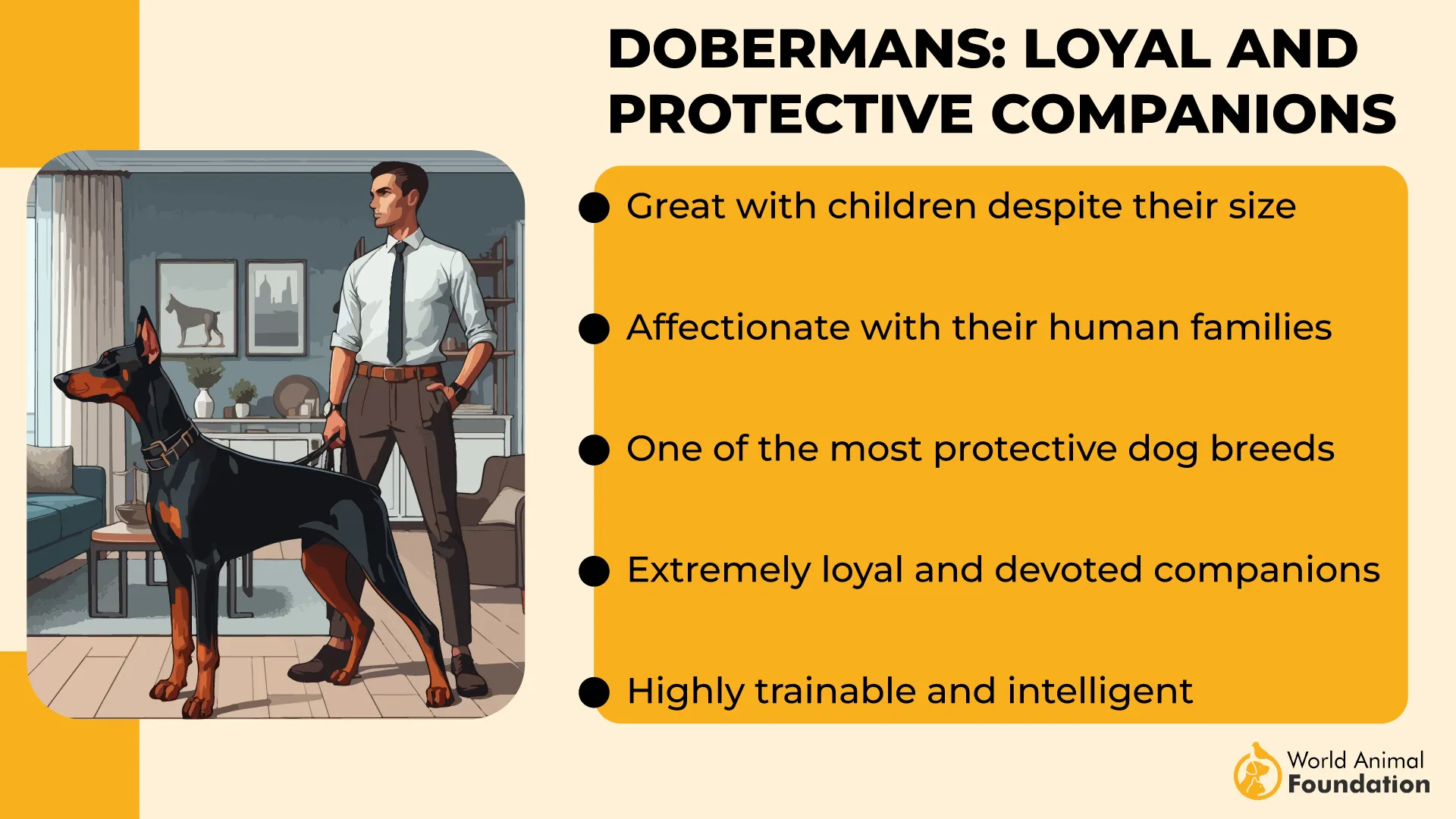
As a breed, Dobermans tend to be very in tune with their surroundings. Their sharp instincts mean that they’re not only alert to changes in their environment but also to the emotions of their owners. This heightened awareness of their surroundings is part of what makes them excellent guardians.
6. Presa Canario
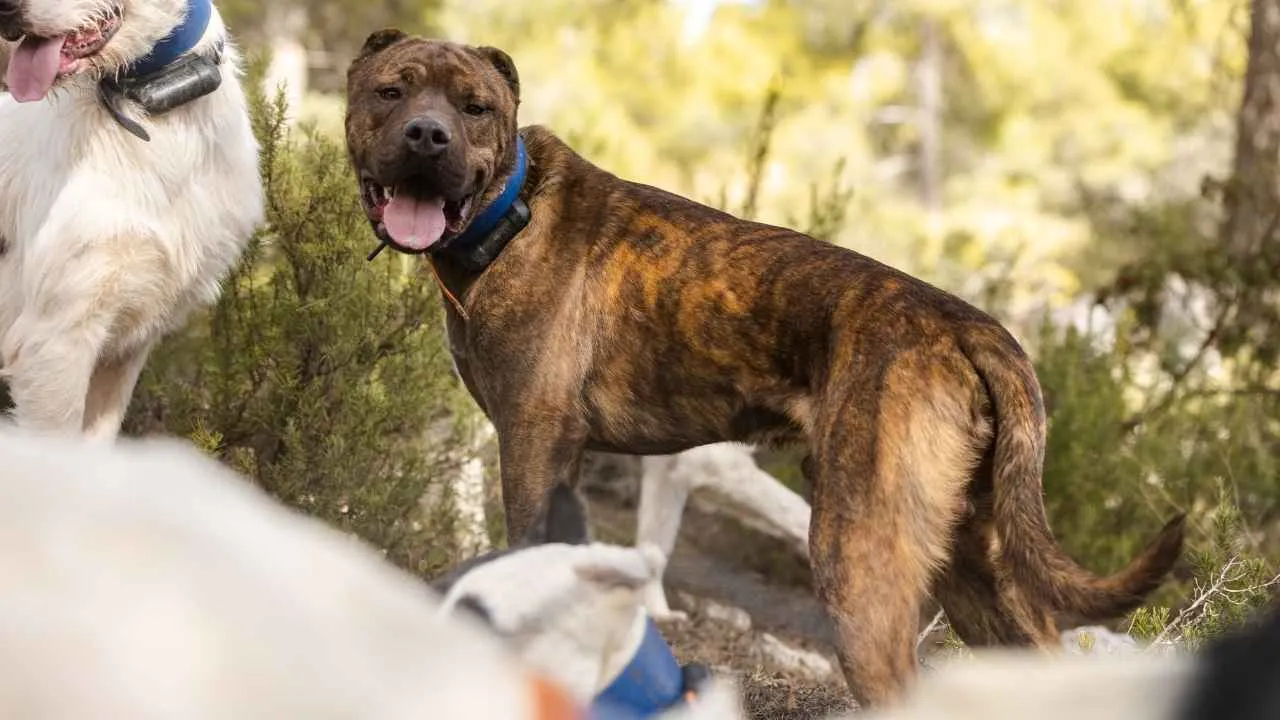
The Presa Canario, often known as the Canary Mastiff, hails from the Canary Islands. Bred as a working dog, this powerhouse was originally used for herding and guarding livestock. While they might look intimidating due to their large size and muscular build, these dogs were actually meant to keep watch over other animals, not be aggressive without reason.
When it comes to aggression and the risk factor, the Presa Canario is a breed that demands respect. While they can be incredibly loyal and affectionate to their family, their protective nature can sometimes escalate. With the right training, however, they can live peacefully alongside both people and other dog breeds, showing their true gentle side when needed.

A Presa Canario’s bite force is no joke. With a massive jaw and incredible strength, they are capable of exerting a tremendous amount of pressure. Their physical strength is part of what made them so valuable in guarding and protecting. It’s this strength, however, that places them in the category of high-risk dogs if not properly trained.
Due to their strength and occasionally intense temperament, some areas have legal restrictions on owning a Presa Canario. Certain regions have imposed bans or regulations to control the dog population and ensure safety. As with many breeds with a high level of natural power, knowing the laws in your area before adopting one is essential to avoid any issues.
Training and socialization are key in managing a Presa Canario’s temperament. They need selective breeding for the right traits, but even more, they need consistent, positive training to help them coexist peacefully. Socializing them with other dogs from an early age helps reduce the risk of aggression toward unfamiliar animals and people.
7. Cane Corso
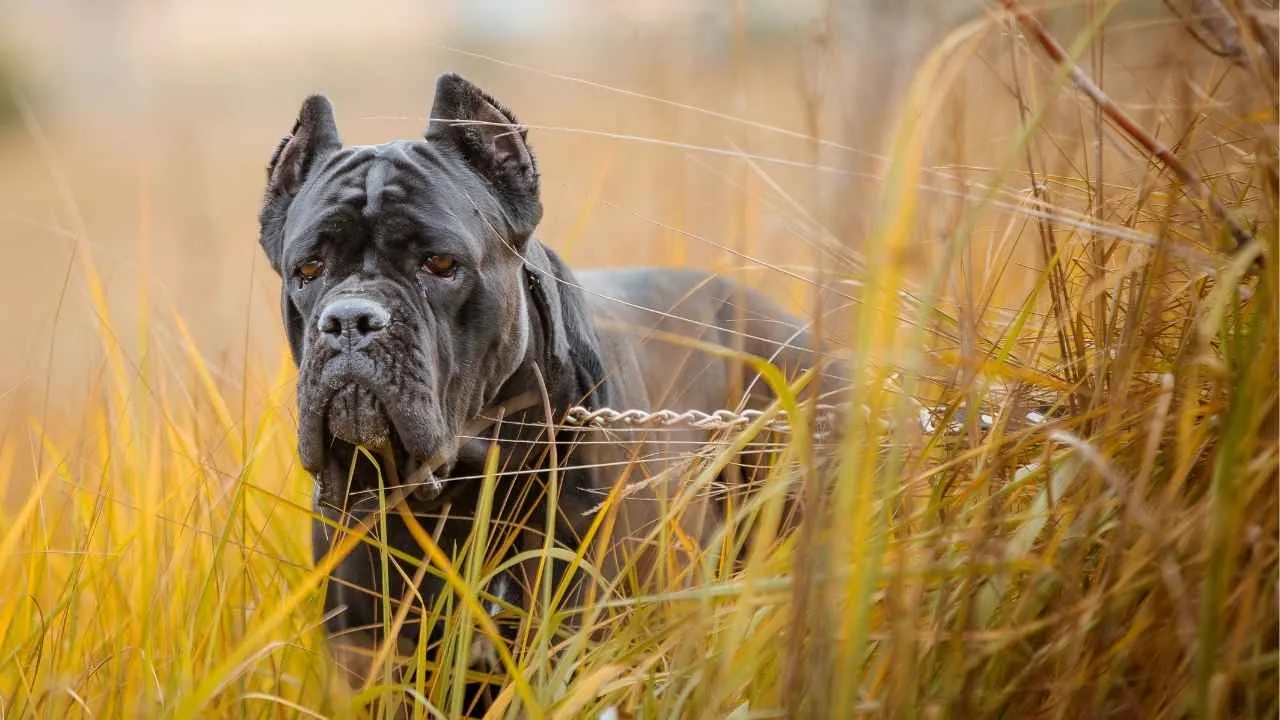
The Cane Corso is an Italian breed with a long history of being used as a guard and working dog. These dogs are built like tanks, with muscular bodies and an impressive stance. Historically, they’ve been used to guard livestock and even hunt large animals, but today, they’re known as loyal companions to the right prospective owners who understand their needs.
When it comes to aggression, Cane Corsos can be highly protective, especially of their family. Without proper socialization, their protective instincts can turn into unnecessary aggression. This breed can pose a danger to smaller animals, so it’s important to train them properly from a young age to avoid territorial behavior.

A strong bite is part of the Cane Corso’s genetic makeup, which makes them capable of causing significant damage if they feel threatened or poorly trained. Fatal bites are rare but not unheard of with this breed, especially in situations where there is a lack of proper guidance and socialization. Responsible ownership is crucial to ensuring this dog remains a safe and loving companion.
While the Cane Corso is not typically aggressive toward human beings, they can show dangerous behaviors when provoked or if they’ve had a negative past experience. This is where responsible ownership comes into play. With the right leadership, these dogs can be both gentle and protective, striking the perfect balance between strength and affection.
Human fatalities involving this breed are uncommon but do happen, often due to poorly trained or unsocialized individuals. Therefore, it’s vital for Cane Corso owners to invest time in their training and socialization to avoid any potential harm. A properly trained Cane Corso can be a loyal, loving, and formidable companion without the risk of a tragic incident.
Conclusion
In short, understanding each dog’s unique traits is essential for a harmonious relationship. Whether it’s a German Shepherd or a Labrador Retriever, proper training is crucial. Dogs like the Siberian Husky need active owners who can keep up with their prey drive.
Some breeds, such as British Bulldogs and mixed breeds, require consistent socialization. Dogs with a powerful bite, like the Presa Canario, need firm boundaries. Always ensure your dog is mentally and physically stimulated to avoid dangerous behaviors.
Breeds with strong instincts may need more attention, but with the right training, they can thrive. It’s vital to understand a dog’s behavior to keep everyone safe. Regardless of the breed, responsible ownership can help prevent serious issues.
Safety is always a priority, especially with breeds that may seem intimidating. Dog bite statistics show that many accidents can be avoided with early education. Never underestimate the importance of socializing your dog early on.
Remember, no breed is inherently dangerous if treated with respect and care. Proper socialization, regular exercise, and a balanced environment are key. Every dog, from the Alaskan Malamutes to Labrador Retrievers, has the potential to be a great companion.


